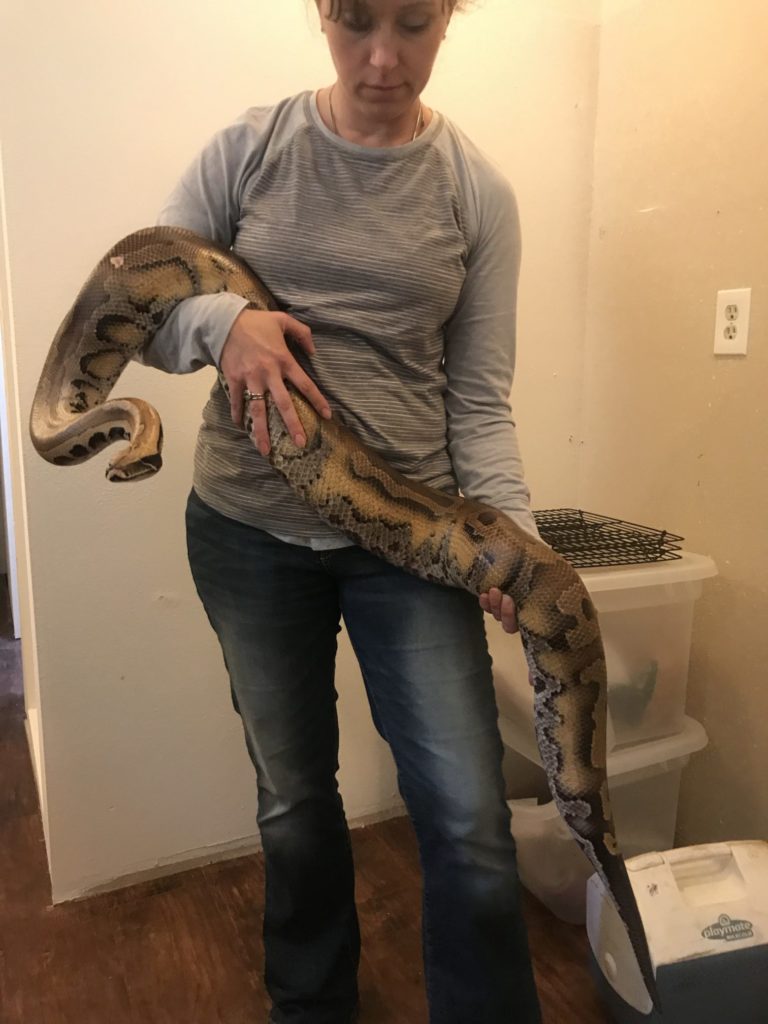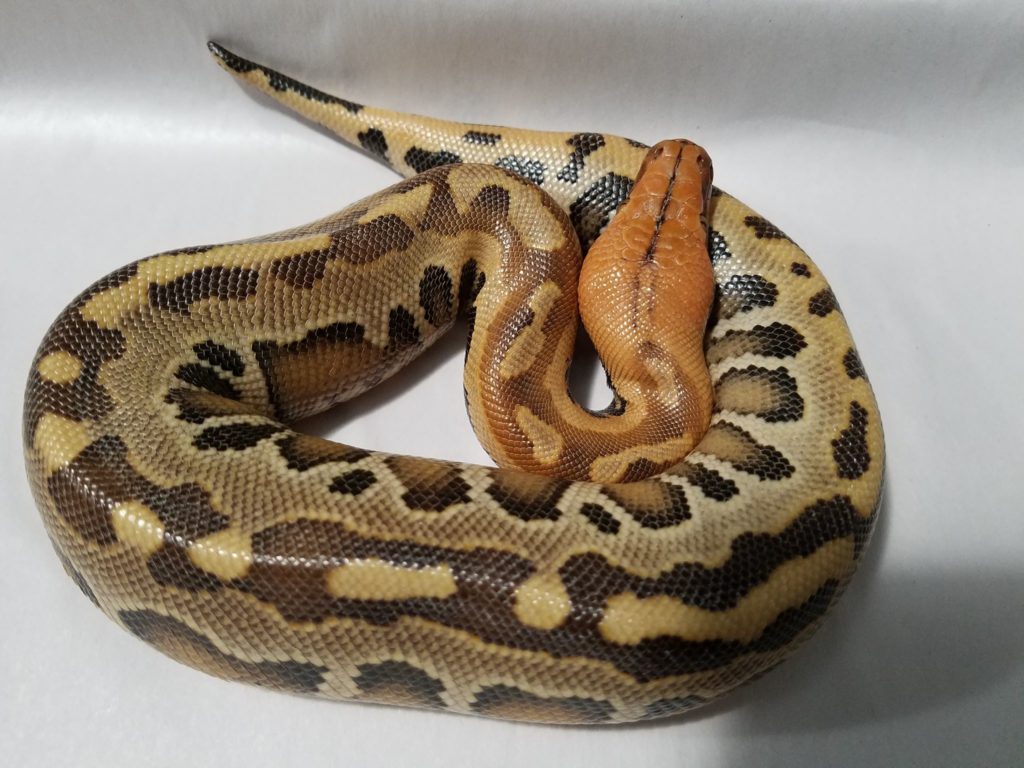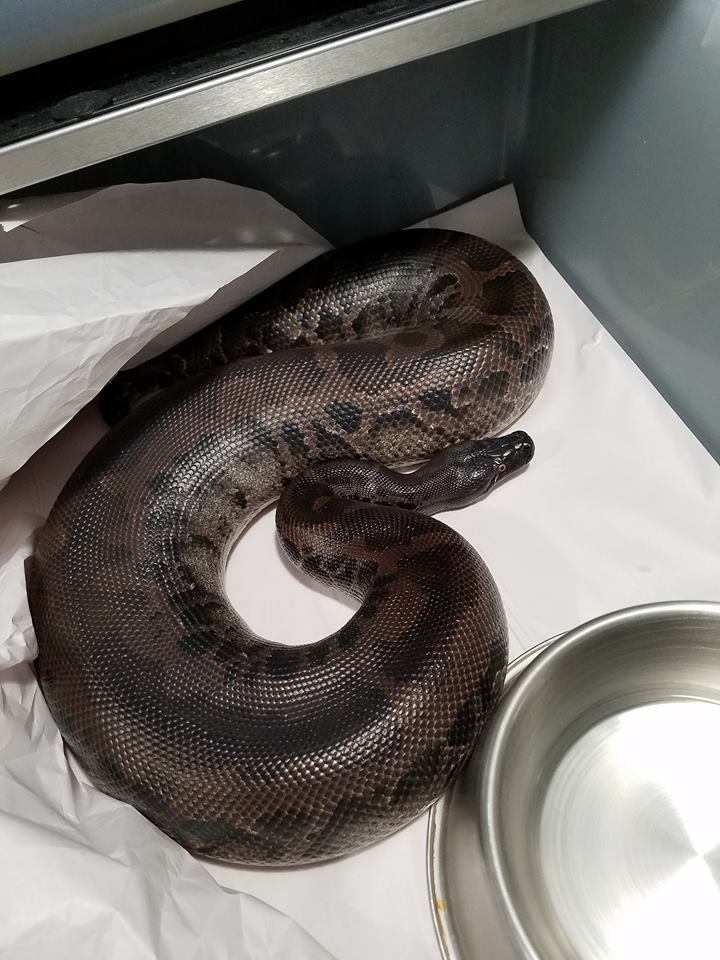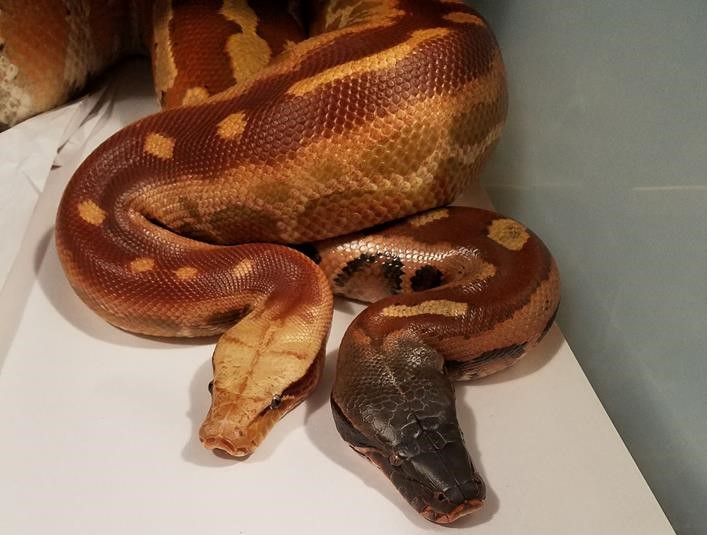
Blood Pythons and their relatives
What’s a
blood and what’s a short tail?This group includes three different types of
snakes that commonly get confused for each other.
1) Blood pythons:
Python brongersmai – the largest and naturally red
2) Borneo short tail pythons:
Python breitensteini – brown or tan
3) Sumatran short tail pythons (blackbloods):
Python curtus – yellow-brown or black
These
snakes are native to south east Asia and found in countries like Myanmar and
Borneo. There is actually a fourth group of snakes in this family but
they are not well known, nor easily found in captivity. The blood and
short tail pythons are a bit more spunky than the other snakes we have at Snake
Haus. They have a reputation for being flighty and bitey, but generations
of captive breeding have helped to dampen those characteristics.
These beauties can have very colorful patterns and a thick heavy body that is
quite unique to this group. They are considered to be a medium sized
python and don’t tend to get much bigger than 5′ long; with the exception some
of the older adult blood pythons that have been seen to reach 8′ and into the
range of 30 or 40lbs. A snake in this group that is only about 5′ long
can easily weigh in the 20lb range.
Visit with the Snake Haus blood pythons here. Click on the links below to read about them.

Borneo 
Sumatran 
Red blood
Photo credits: Brian Cimala
The photos above show the three different types of Short Tails. The first is a Borneo, the second is a melanistic Sumatran (black blood), and the last photo shows two of the red Blood pythons. Snake Haus has three different colors of blood pythons. Meet them below:
Red Blood Python
Yellow Blood Python
T- Albino Blood Python
Melanistic Sumatran Short Tail (Black Blood)
Watch this short clip to see size and shape of a mature adult female blood python.

